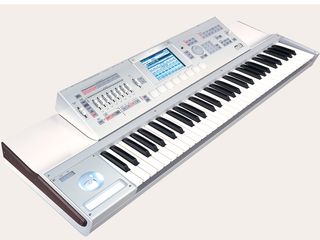

Happily, a few minutes of editing soon sorted out these cock‑ups. Of the Programs based on the string samples, only 'Krimson Strings' sounds even vaguely like a genuine Mellotron, although it's stereo, sustains indefinitely if you hold it, and has added chorus! Korg's programmers have even made it velocity‑sensitive (arghh!). Furthermore, these PCMs are too clean and too in tune to convince aficionados that they're listening to the real thing. You mean Mellotrons, mate, and mine is not a nightmare, it's a thing of beauty, so you're making no friends here. taken from those mechanical nightmare tape‑driven keyboards of days gone by”. Nonetheless, Programs built from these samples are bright and dynamic, and I wouldn't hesitate to use them.Īlongside these, Korg have added what they call "tape‑playback string and flute sounds.

The electric pianos are excellent, and the Clavis are also good, but the latter instrument is difficult to emulate well and the looping on a handful of the samples is evident. Korg have also updated a number of the M3's electric piano samples and its Hohner Clavinets. On the other hand, I'd describe the SG1D's piano as a 'mildly unpleasant and clunky piano‑like sound', although I accept that other players may find good uses for it. Inevitably, the velocity zones of the M3 Grand Piano are apparent, but I found that careful programming of the sample crossfade feature in the EDS (Enhanced Definition Synthesis) oscillator pages could minimise this. I'm fussy about piano sounds, so it's a testament to how far we've progressed when I find that a sampled grand piano can be sandwiched between a thousand other PCMs and sound half‑decent.
#KORG M3 ORIENTAL SOUNDS PLUS#
Let's start with the modified ROM, which includes a new, stereo acoustic piano, plus a monophonic piano and a re‑sampled version of the 12‑bit stage piano introduced in the Korg SG1D way back in 1987. Korg call these 128MB libraries, but they are data‑compressed to less than 64MB (which, as we'll see, is a necessity) and describing them in the tiny print as "128MB when calculated as 16‑bit linear” is naughty, although not unique to Korg. The expansion to the M3's PCM library comprises a revision to the internal 256MB ROM, plus the inclusion of three OASYS‑derived sample libraries originally projected to be chargeable extras.
#KORG M3 ORIENTAL SOUNDS PC#
Casting aside the hyperbole, we can categorise its advances into four primary areas: lots of new PCM samples, plus scores of new Programs and Combis built from them major enhancements to the sequencer a new Mac and PC editor and, finally, big improvements in the KARMA (Kay Algorithmic Real‑time Music Architecture). Somewhat immodestly, Korg's blurb suggests that version 2.0, known as M3 Xpanded, has "entered a new dimension” which, in my view, would make it rather difficult to play. The Korg M3 workstation is still less than two years old, but it has already benefited from a significant upgrade. The M3 workstation, already a powerful beast, has gained impressive new features and an 'Xpanded' name tag.


 0 kommentar(er)
0 kommentar(er)
